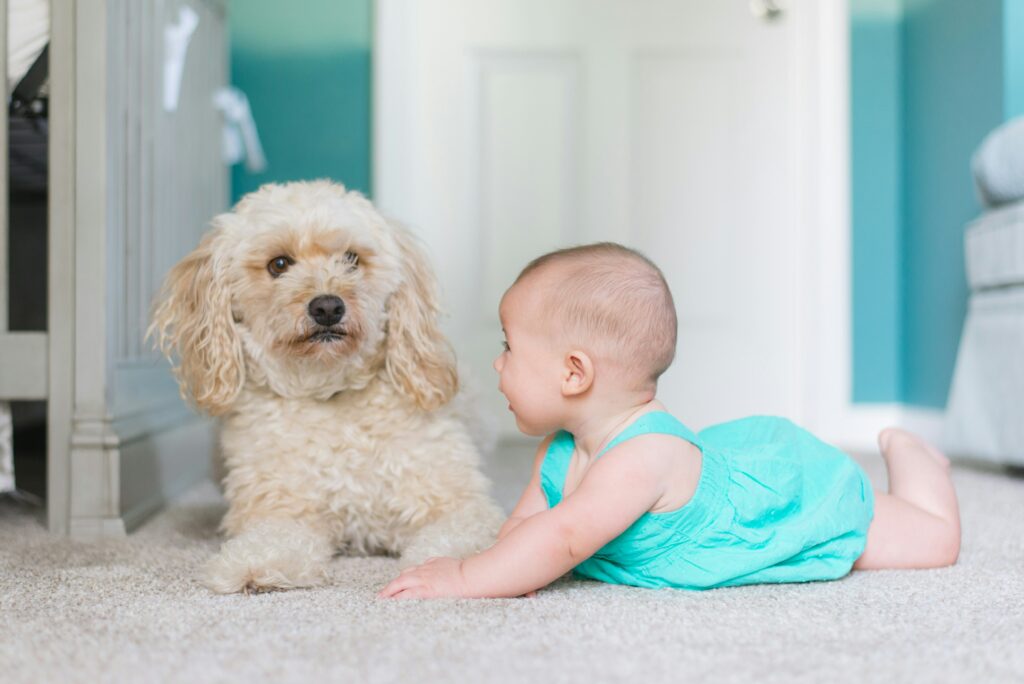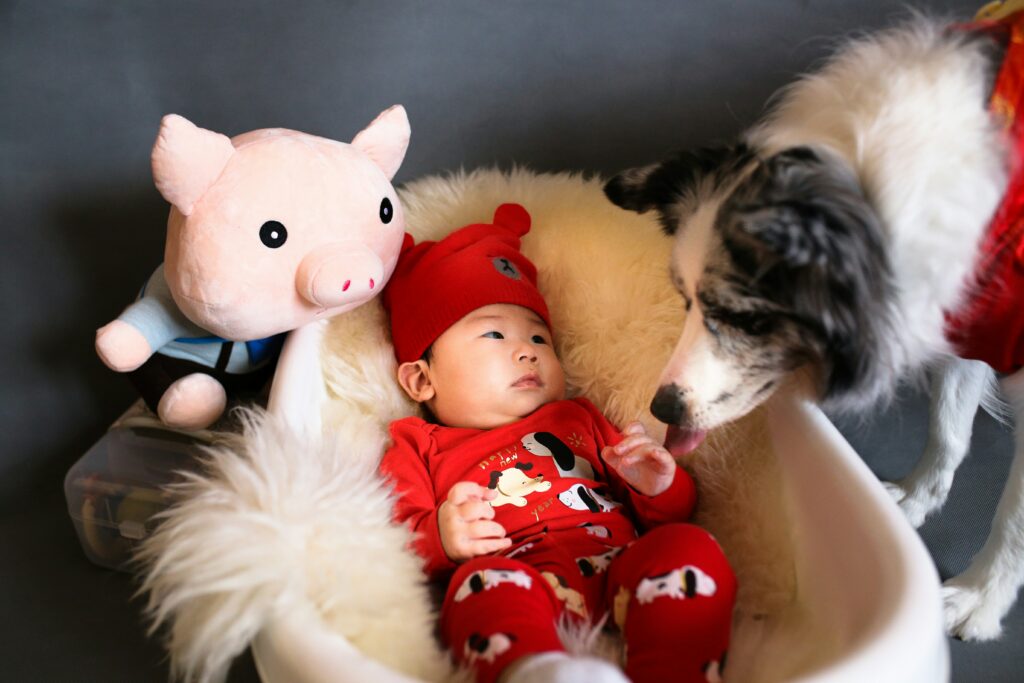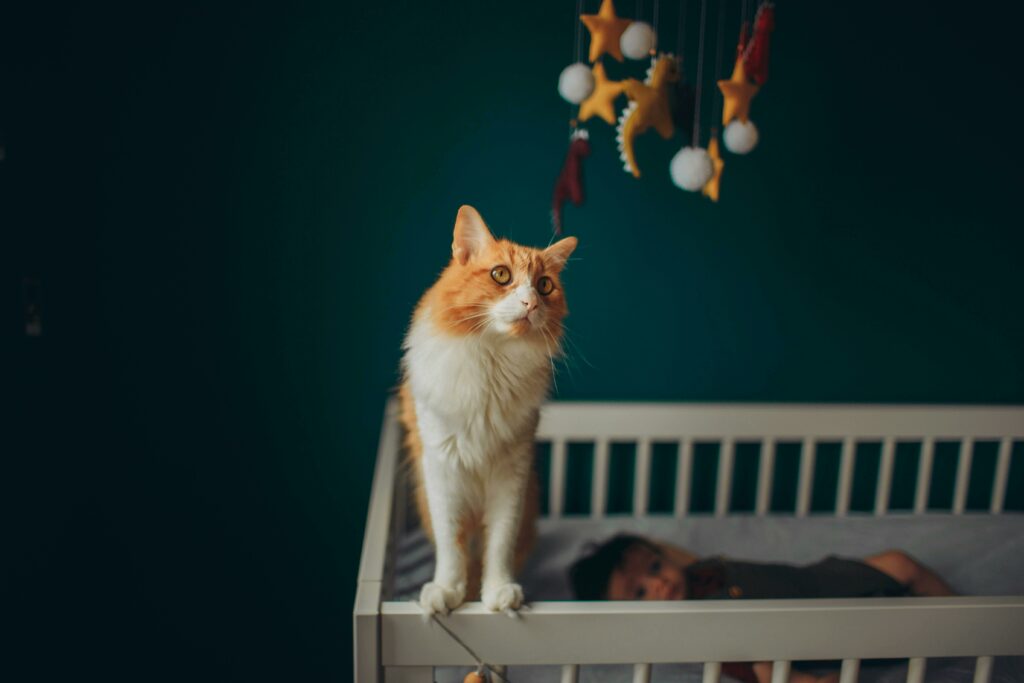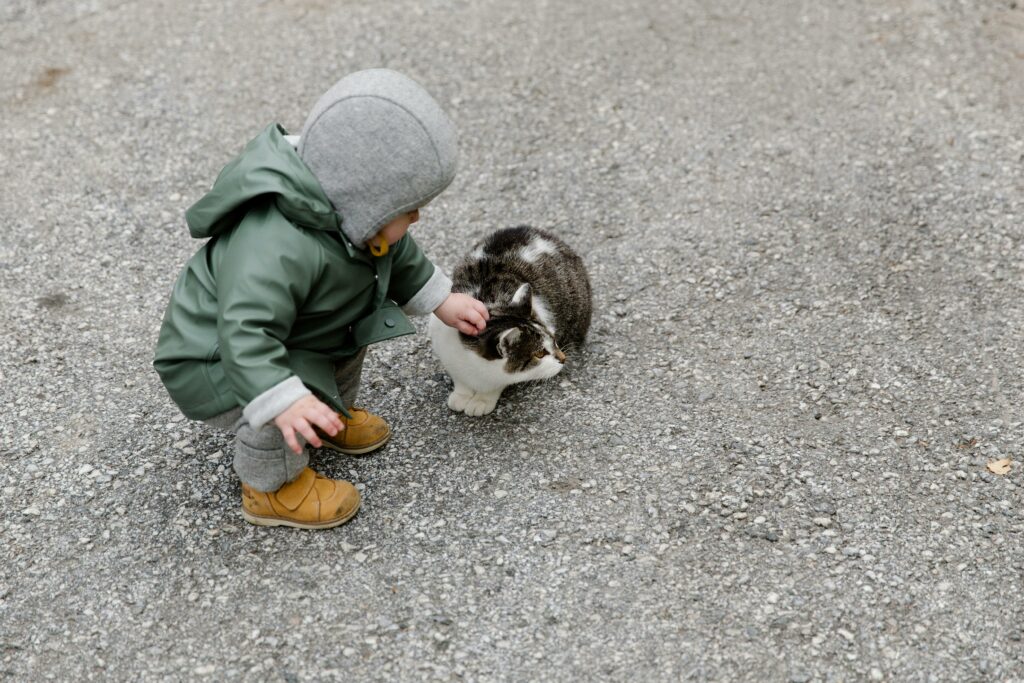

Bringing a new baby home is an exciting yet life-changing event for the entire family, including your pets. Proper preparation and a structured introduction can help create a safe and harmonious environment for both your baby and your furry friend. Here’s a step-by-step guide to ensuring a smooth transition when you introduce your pet to baby.
1. Prepare Your Pet Before the Baby Arrives
Gradual Changes: Start adjusting your pet’s routine in advance to prevent sudden disruptions. If you plan to modify feeding times, walking schedules, or allowed areas in the house, make these changes gradually.
Desensitization to Baby Sounds and Smells: Introduce your pet to recorded baby noises, such as crying and cooing, to help them acclimate. Allow them to sniff baby lotion or blankets to familiarize themselves with new scents.
Behavior Training: Reinforce basic obedience commands like “sit,” “stay,” and “leave it.” Address any signs of anxiety or aggression before the baby arrives.

2. The First Introduction
Stay Calm and Positive: Pets can sense emotions, so maintaining a relaxed demeanor reassures them.
Controlled Interaction: Keep your pet on a leash or at a safe distance during the first meeting. Allow them to observe and sniff from afar before gradually decreasing the distance.
Supervised Engagement: Always monitor interactions closely to ensure a safe and stress-free experience for both your baby and your pet.
3. Establish Boundaries and Safe Spaces
Create Pet-Free Zones: Designate areas where your pet is not allowed, such as the baby’s nursery.
Provide a Safe Retreat: Ensure your pet has a quiet space where they can retreat when feeling overwhelmed.
Positive Reinforcement: Reward your pet with treats and praise when they behave calmly around the baby.

4. Maintain a Routine and Give Your Pet Attention
Consistency is Key: Keep your pet’s feeding and exercise schedule as consistent as possible.
Quality Time: Continue engaging with your pet through play and affection to prevent jealousy or anxiety.
5. Monitor Interactions and Watch for Warning Signs
Recognize Stress Signals: Look for signs of distress in your pet, such as excessive panting, whining, or avoidance.
Never Leave Them Alone Unsupervised: Even the most gentle pets should not be left alone with a newborn.
Seek Professional Help if Needed: If your pet shows signs of aggression or extreme anxiety, consult a professional trainer or veterinarian.

Conclusion
With proper preparation, patience, and supervision, your pet and baby can develop a strong and loving bond. By following these steps, you can create a safe and happy environment for your growing family.
References
How to Introduce Your Dog to Your New Baby – https://www.akc.org/expert-advice/advice/introducing-dog-to-baby/
Dogs and Babies – https://www.aspca.org/pet-care/dog-care/dogs-and-babies?
How to introduce your cat to your baby – https://www.bluecross.org.uk/advice/cat/behaviour-and-training/how-to-introduce-your-cat-to-your-baby
Cats and babies – https://www.cats.org.uk/help-and-advice/cats-and-your-family/cats-and-babies
Share this:
- Click to share on WhatsApp (Opens in new window) WhatsApp
- Click to share on Facebook (Opens in new window) Facebook
- Click to share on LinkedIn (Opens in new window) LinkedIn
- Click to share on Pinterest (Opens in new window) Pinterest
- Click to share on Tumblr (Opens in new window) Tumblr
- Click to share on X (Opens in new window) X
- Click to share on Reddit (Opens in new window) Reddit
- Click to share on Telegram (Opens in new window) Telegram
- Click to email a link to a friend (Opens in new window) Email
- Click to print (Opens in new window) Print






























